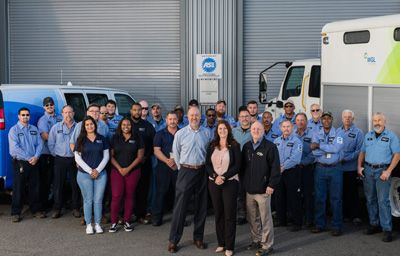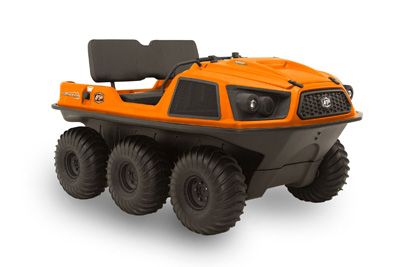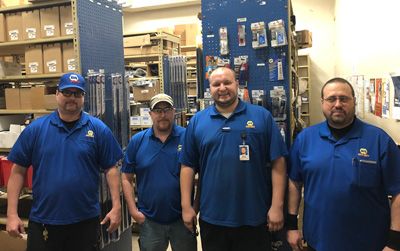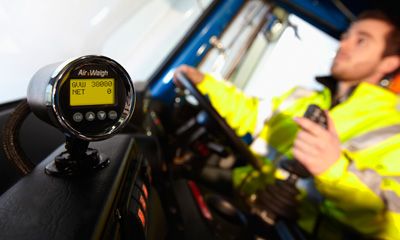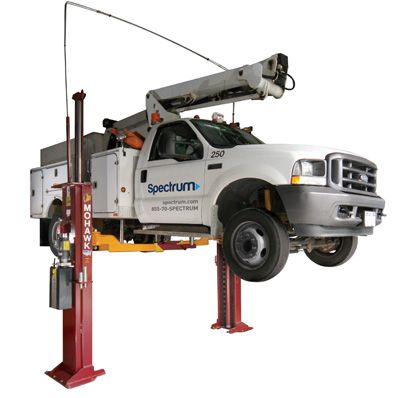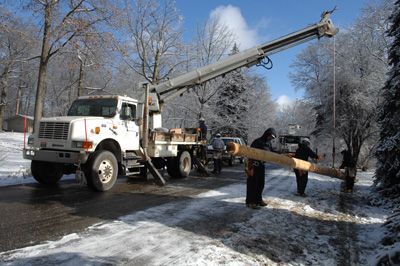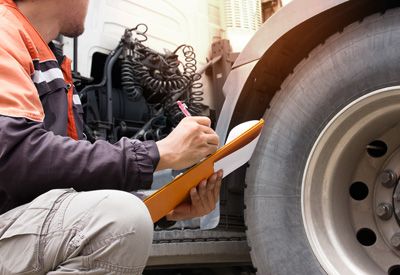Selecting the Right Advanced Driver Assistance Systems for Your Fleet
From automatic braking and lane-keeping assist to adaptive cruise control, backup cameras and parking sensors, there are quite a few advanced driver assistance systems (ADAS) to choose from today. So, how do you decide which ones are best for your fleet vehicles? UFP recently spoke with Dale Collins, fleet services supervisor for Virginia-based Fairfax Water, to find out which systems have proved most helpful to his fleet over the past decade.
Identify Areas for Improvement
Fairfax Water has been utilizing ADAS since 2010. The utility currently operates a total of 434 units, 320 of which are on-road vehicles ranging from Class 1 to Class 8. Approximately 40% are equipped with some sort of ADAS; parking assist and backup cameras are the bare minimum, according to Collins.
The first tip he shared about spec’ing ADAS is to identify what you’re really trying to improve. “In our case, we really wanted to improve on a particular hazard, which was backing,” Collins explained.
Fairfax Water operates 24 hours a day, seven days a week, with many of its employees out all hours of the day and night, in all weather conditions. In the past, because of the sheer size of most of the fleet’s vehicles, drivers did not have clear vision to the direct rear and would sometimes back into stationary objects, such as parking bollards and lampposts.
Pilot programs were decided upon to help solve this problem. The programs involved parking sensors and rear backup cameras, which proved to be great solutions.
“We figured out which [cameras and parking sensors] worked the best, and we went ahead and adapted those to the vehicles that we wanted to focus on, which at that time were the larger vehicles,” Collins said. “That paid dividends almost right off the bat with the reduction of those backing incidents.”
Fairfax Water went from double-digit reported backing accidents to a single-digit number.
“If you look at the years prior to that, we noticed a sharp decline since then,” Collins added. “Even the backing incidents themselves on the heavy-duty vehicles have all but disappeared.”
The backup camera that Fairfax Water uses is built into the center of the windshield where a rearview mirror typically would be located.
“Even in these larger vehicles, space to add a camera on the dash is at a premium,” Collins said. “To be able to put a monitor that the driver can easily see without it becoming a distraction as well is difficult to find.”
The monitor is built into the rearview mirror, a natural place for a driver’s eyes to look when they’re backing up, he explained.
“This also helps keep the driver’s vision forward because the last thing you want is someone so focused on backing up that they lose sight of the swing on the front end and sideswipe something,” Collins added.
Do Your Research
After the pilot programs were completed, Fairfax Water began requesting that the technologies be installed on its larger vehicles prior to delivery.
“In our standard specification, we order these types of vehicles that either come with a factory-altered system that they can put on there after the body is built, or an aftermarket system that we know has a good reputation,” Collins said.
The biggest challenge Fairfax Water had was the sheer number of different vendors to consider. The utility went through four different companies and manufacturers for the parking sensors. The cameras, Collins said, were a little easier to narrow down because many were not of consumer-grade quality.
“The pilot was very eye-opening, and sometimes the most expensive systems were no better than the least expensive one,” he recalled. “A lot of those technologies were really in their infancy back then. It was almost like a trial-and-error type of thing.”
Collins advised not to skimp and to choose something in the middle-price range. Ask companies for testimonials and if they have any existing customers that may provide some helpful insight.
“Speak with people that have a different type of system and find out how it works, and if it works for their operators,” Collins said.
Also, do your due diligence and make sure of the system’s availability. You’ll also want to ensure timely parts availability.
Train Your Staff
When it comes to new technology, Collins emphasized the importance of investing in staff and operator training.
“If you give them a technology and they’re unfamiliar with it, you’re setting them up for failure, not success,” he said. “Train and bring everyone up to speed, train them on how the systems work, and let them get comfortable with it.”
Collins said once Fairfax Water had selected the products they wanted, they focused on training those who would be using them. There was an initial learning curve, but he said the training made a big difference in terms of acceptance and understanding.
About the Author: Grace Suizo has been covering the automotive fleet industry since 2007. She spent six years as an editor for five fleet publications and has written more than 100 articles geared toward both commercial and public sector fleets.
*****
ADAS are Only Designed to Assist
While advanced driver assistance systems provide safety benefits, users still need to operate as if they don’t have that safety net.
“We made sure that [operators] understood that it’s just a system to assist them,” said Dale Collins, fleet services supervisor for Fairfax Water. “If there’s a problem with the system, they need to report it. We expect them to still do their due diligence: Look before you back. If you’ve got a spotter, use them. It made them understand that this is not the end-all be-all that you can rely on 100%.”
A case in point: During a pilot program, one driver experienced some interruptions on his backup camera when he was at a fast food drive-thru. Instead of showing the view directly behind his truck, the wireless sensors picked up a frequency that caused the camera to display images of a person eating inside the restaurant.



